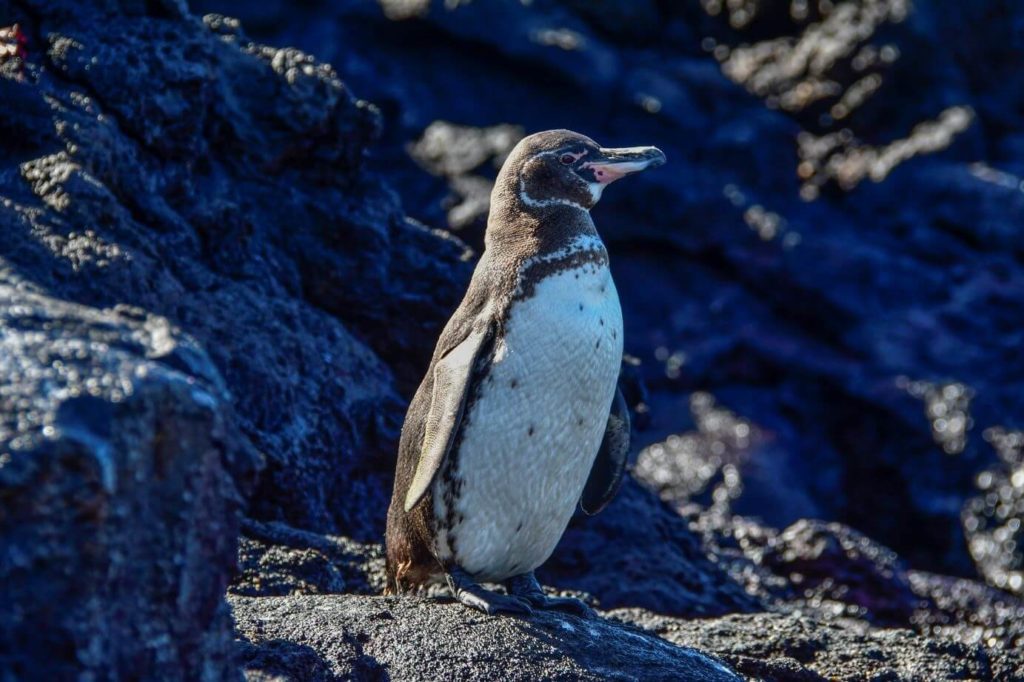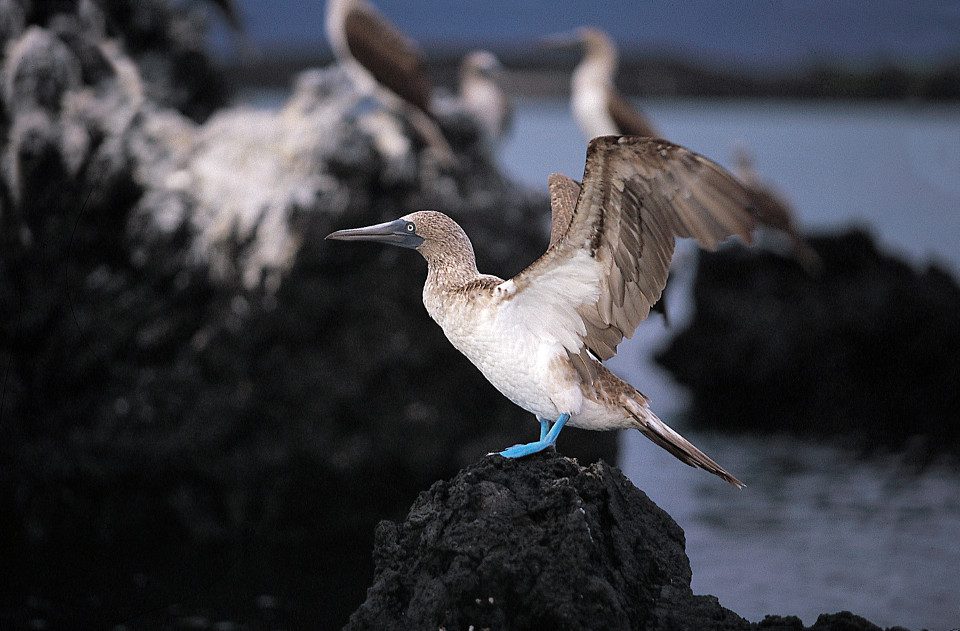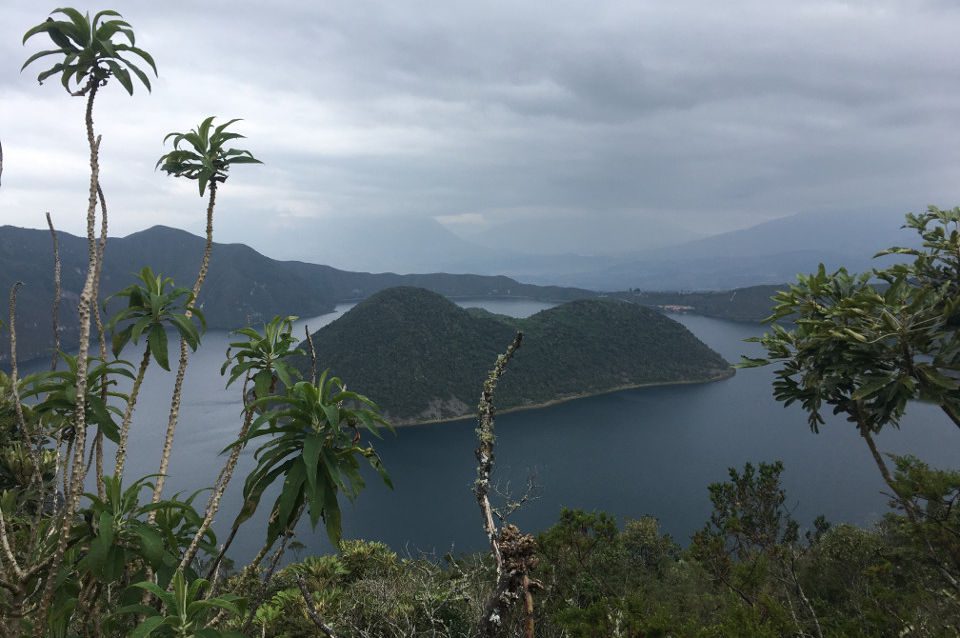The Galapagos Islands are a marvelous place to experience the beauty of nature in its purest form. Regardless of when you choose to go, every island you visit will undoubtedly have something in store for you. One of the most magical events to witness is the moment when sea turtles eggs hatch in Galapagos. If you’re lucky enough, you might even be able to experience their amazing race to the ocean when you come visit! But before you get your hopes up, keep in mind the following two important things to know if you want to see green sea turtle eggs hatch in Galapagos!
TALK TO A DESTINATION EXPERT

Diego Zapata

Rosa Mena

Sandy Lara

Diego Zapata

Rosa Mena

Sandy Lara
Factor to keep in mind #1: It’s an incredibly rare event
One thing you need to take in consideration if you’re preparing for this big event is that, first of all, green sea turtles only lay their eggs once every 2 to 3 years. This turtle species is known for being an opportunistic breeder, which means that the Green Sea Turtle will choose it’s nesting time according to weather conditions, which usually involves the presence of some nice warm sand. So, if you want to see Green sea turtle eggs hatch in Galapagos, you may want to plan your vacation during Hot Season in Galapagos.
Another important thing to consider is that, regardless of their highly migratory reputation, female green sea turtles always return to the same exact beach to lay their eggs. Some of Galapagos’ prime spots for this rare event are:
Puerto Egas:
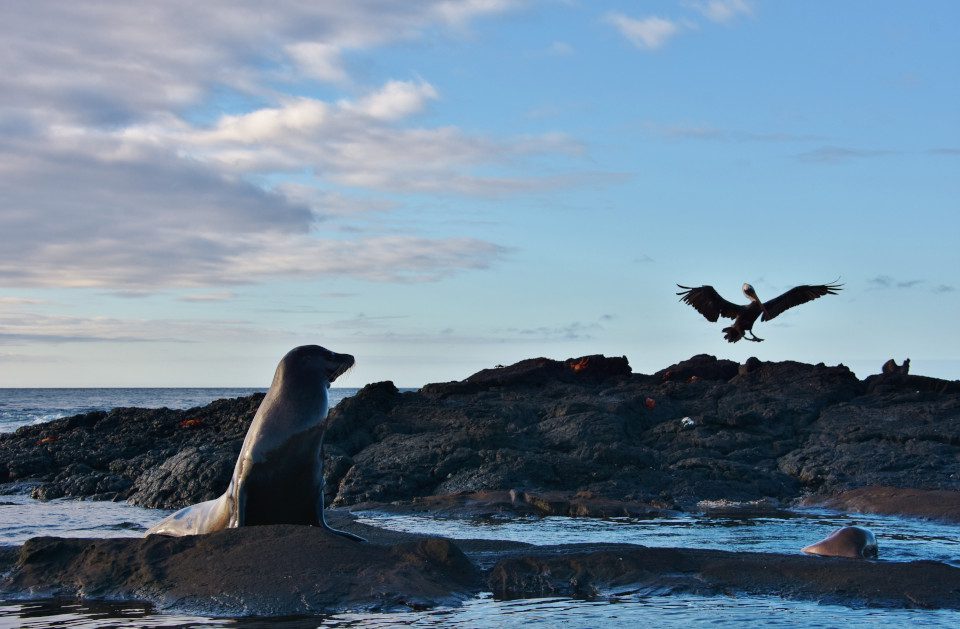
Visitable on our:
Northern Galapagos Islands itinerary (Santa Cruz II)
Northern Galapagos Islands itinerary (Isabela II)
Las Bachas:
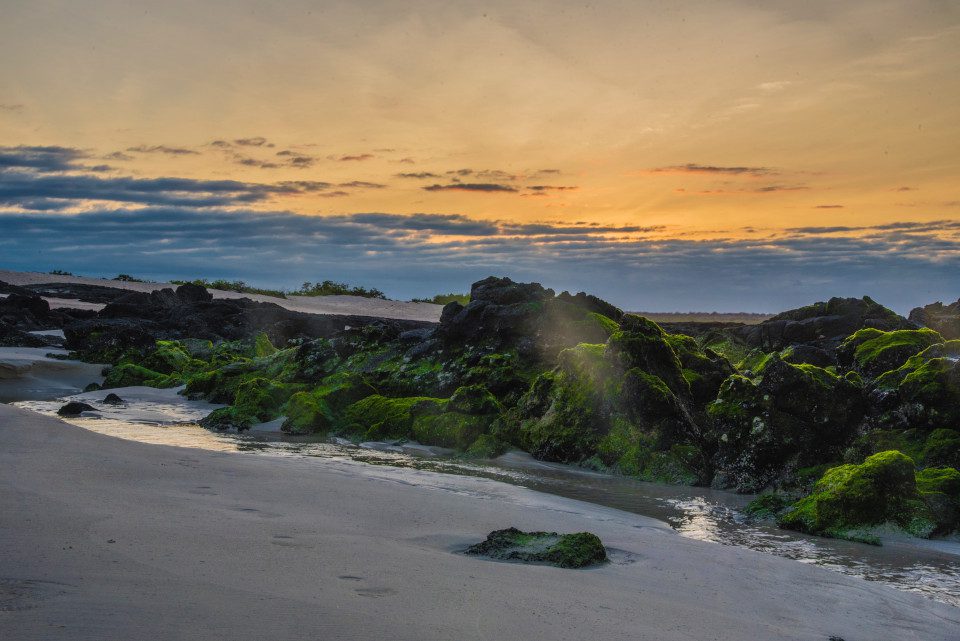
Visitable on our:
Northern Galapagos Islands itinerary (Santa Cruz II)
Gardner Bay:
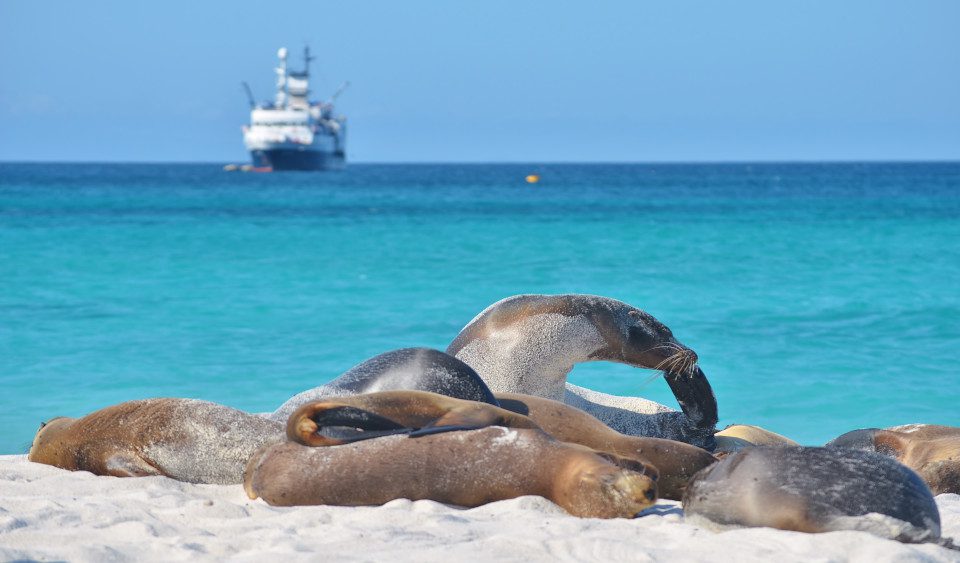
Visitable on our:
Eastern Galapagos Islands itinerary (Santa Cruz II)
Eastern Galapagos Islands itinerary (La Pinta)
Southeastern Galapagos Islands itinerary (Isabela II)
Cormorant Point:
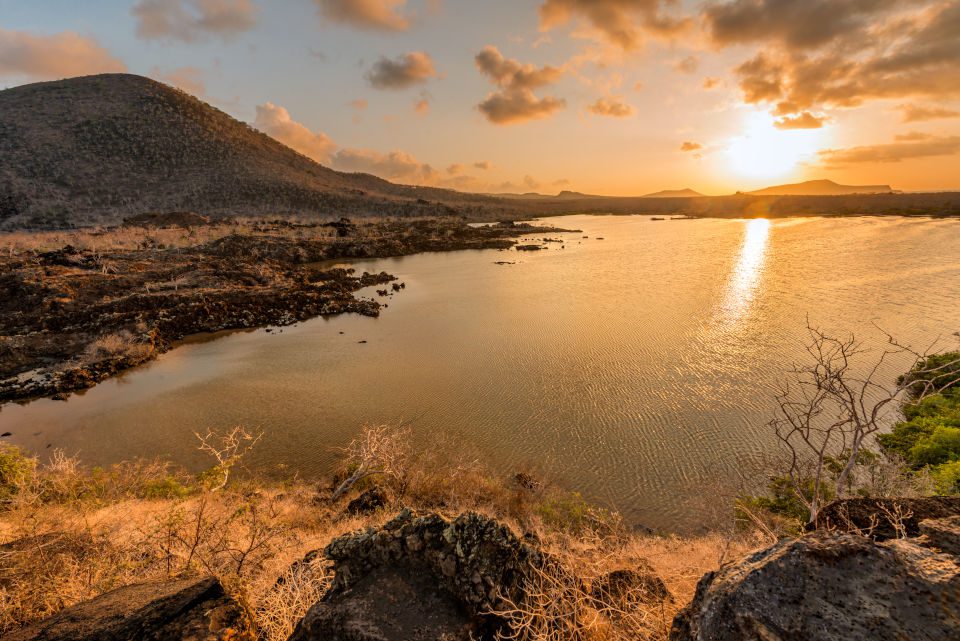
Visitable on our:
Western Galapagos Islands itinerary (Santa Cruz II)
Western Galapagos Islands itinerary (La Pinta)
Southeastern Galapagos Islands itinerary (Isabela II)
So make sure your tour operator has at least one of these destinations in its itinerary!
Factor to keep in mind #2: It’s an incredibly complex event that depends on numerous factors
When nesting, female green sea turtles choose nighttime to avoid predators. If the mother sea turtle feels that the beach is not safe for her, she’ll return to the sea and emerge only when she feels that her surroundings are free of danger. Even though the hole she digs for her eggs tends to be rather deep, it still remains vulnerable to the curious eyes and noses of stray dogs, pigs, seagulls, and crabs, all of which can wreak havoc if they manage to find the nest.
That’s why the green sea turtle builds fake nests to distract predators from the real nest. Once everything is settled, the turtle returns to the ocean erasing every trace of her “visit.” The green sea turtle eggs will now sit under the sand for two months (50 to 55 days) before hatching.
Ready, set, go!
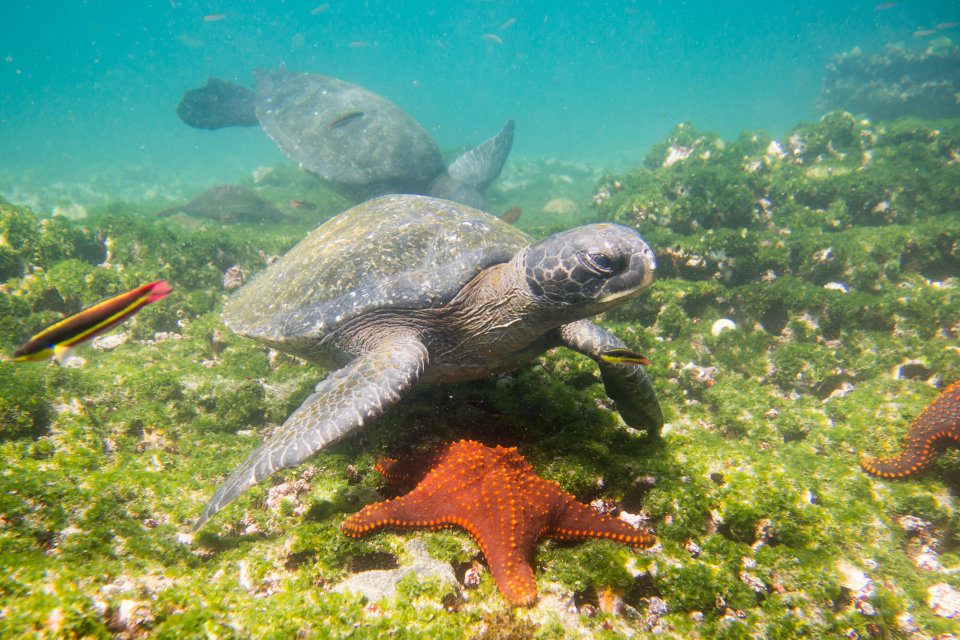
When the eggs are ready to hatch, a domino effect begins. The first turtle to emerge from its shell will start stimulating the others to “wake up” so that they can all work together in order to free themselves from the nest. Once they break the sand barrier, they’ll all start crawling out and racing towards the water. The fact that they all emerge together helps scare the predators away because of their volume (green sea turtles can lay anywhere between 50 and 200 eggs!). Ultimately, this ensures a safe journey towards the ocean.
And, in case you were wondering…
The turtles know exactly where to run towards because they’re attracted to light, often times using the brightness of the moon and/or stars as a reference (note: baby sea turtles will almost always only emerge under the cover of night). This is one of the reasons why watching Green sea turtle eggs hatch in Galapagos is so special and requires an enormous amount of luck to witness. Thanks to the absence of artificial light or aggressive urban expansion, turtles find little to zero distractions when making that run for their lives. As a result, with enough luck you’ll only ever really see them coming out while the sun sets or in the early hours of the morning (a.k.a. twilight hours). And don’t forget: the Galapagos National Park is not open to visitors at night!
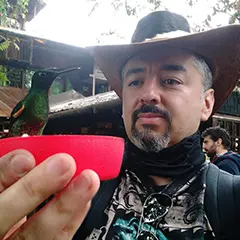
Javier Garcia
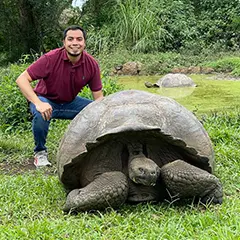
Eduardo Silva

Carolina Escobar
START PLANNING YOUR TRIP

Javier Garcia

Eduardo Silva

Carolina Escobar
Get in touch for more
CONTACT US
So, if you want to be a front row witness of this mesmerizing and tender moment, start planning your next vacation with us now, and keep your fingers crossed in hoping that you’ll be able to see them during the twilight hours of the day. To witness green sea turtle eggs hatch in Galapagos is truly a wonderful experience!
It’s never too early to start planning your trip with us! If you’re looking for more inspiration with respect to this rare event, then check out these beautiful photos taken by nature photographer Jeff Mauritzen to find the inspiration you need to decide!
